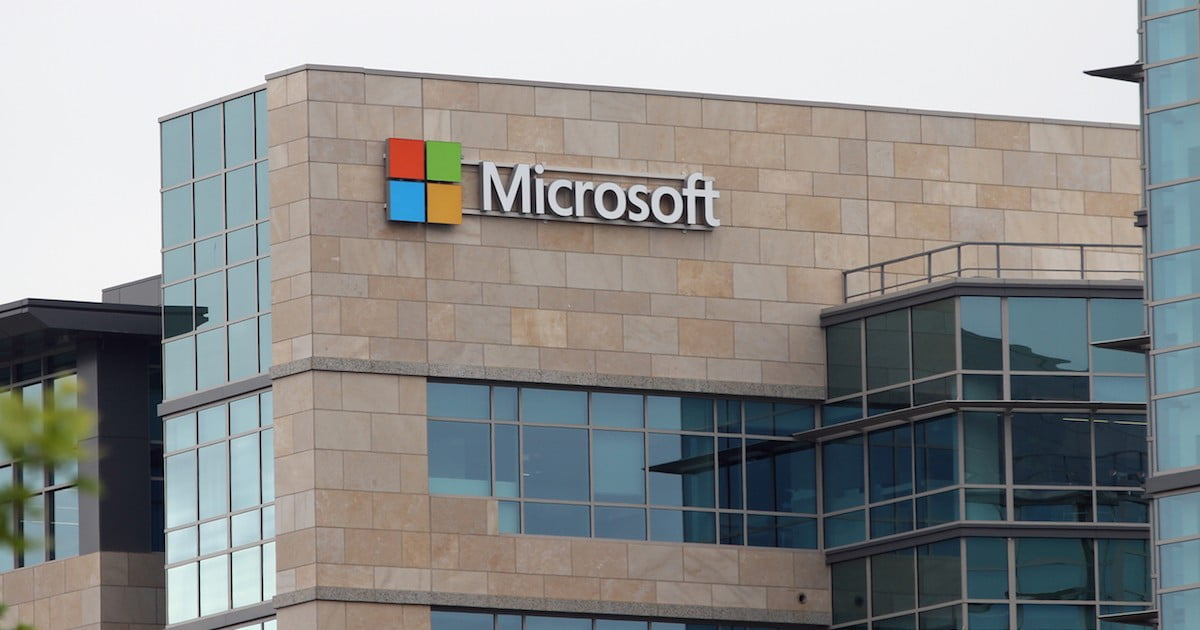Why is Microsoft so successful?
- November 17, 2021
- 0
![]()
There have been many companies whose products have changed, and even revolutionized the way in which we live, but it’s hard to find one which has had the global impact of Microsoft.
People like them and dislike them for various reasons, but I sincerely doubt that any of us can objectively dismiss the impact Microsoft has made.
Founded in 1975, they are a young company by many standards, which may be a contributing factor to their success, but part of their success has been their resilience and ability to respond to changing technologies, market demands, and business opportunities.
In some cases, they have created opportunities, and even demand, while in others they were slow to respond or late to react.
Microsoft recently reported quarterly financial earnings (Q1FY2018) which not only exceeded expectations, but resulted in all-time high stock share price since going public. For reference, the share price for those fortunate enough to obtain Initial Public Offering (IPO) shares was $21 on March 14, 1986.
If we adjust for the nine splits, that would be $0.07 per share today ($21 ÷ 288 = .073). Another way to look at is to consider that the split ratio is 288:1, so if you had 1000 shares at the IPO, and were wise enough to hold them, you would have 288,000 shares at about $84 per share (approximate market value 11/30/2017), for a total of just over $24M! That doesn’t even include the very lucrative quarterly dividends. Not bad for a $21K investment at the IPO.
Even those who bought early rarely kept their stock, largely because the meteoric rise in share price was so unprecedented, most assumed it wouldn’t last. People tended to sell when it hit yet another all-time high share price. I’m not about to make investment recommendations, but as one who has been involved with Microsoft for many years, I can’t help reflecting upon the ways in which they have managed to remain not only competitive, but dominant in so many markets throughout the past 42 years.
My memory may be somewhat subjective, and I won’t claim that I’m completely historically accurate, although I may have more relevant observations and experience than many. When I think about the reasons for the continued success of Microsoft, even as the market has changed, I consider the following:
Perhaps the biggest event during the early years occurred when IBM asked Microsoft to write an operating system for the computer they were developing. IBM believed that if personal computers were successful, they would not only make their mainstream typewriter product line obsolete, but they may be a logical successor to the typewriter and could potentially revolutionize the business for IBM. It’s hard to know whether Microsoft co-founders Bill Gates and Paul Allen predicted this as well, but when IBM asked for an exclusive licensing agreement for the operating system software (MS-DOS), Microsoft denied exclusivity.
Microsoft bought the license for the code which would eventually become MS-DOS from Seattle Computer Products (SCP) in 1986 for $925,000. Bill and Paul predicted that if personal computing would be as successful as they assumed, and if they were to license the operating system to multiple companies, rather than solely to IBM, the total of the other companies combined would eventually exceed even the reach of IBM. That was a huge risk for Microsoft, but it may have been the best decision they ever made.
While the market was truly in it’s infancy at that point, aspiring computer manufacturers, which would later be known as Original Equipment Manufacturers (OEMs) attempted to set themselves apart from their competition by introducing features and functionality that others may not offer. That was sort of another major element in the Microsoft saga, which eventually proved to be brilliant in some respects, but a technical vulnerability in others.
The good news for Microsoft and others, was that the landscape created competition and innovation among organizations, many of which had unique needs and market opportunities. The bad news is that it introduced a platform in which the core was consistent, but there were variables which introduced technical vulnerabilities which could later be exploited.
By contrast, let’s consider Apple. Whether you like him or not, Steve Jobs was a brilliant marketing genius. From a marketing perspective, he created a cult like following, in which people will demand the latest and greatest products, regardless of whether they really have incremental value over that which the user may already have. Apple promoted the premise that “It just works”, which is completely accurate if the user doesn’t stray from the familiar Apple community, but contrary to the wishes and beliefs of many Apple enthusiasts, it often fails to work and play well with Windows, Android, and other non-Apple platforms. This isn’t necessarily a bad thing, but ironically, it validates the challenges Microsoft faces. Apple operates in a largely closed (Apple) environment. They don’t have to accommodate the conflicting or competing needs of other OEMs, so they can predict, test, and control everything their users may encounter. Again, this is great for those who don’t interact outside of the Apple community, but it’s a sharp contrast from that which Microsoft has chosen to endure.
The business model Microsoft has chosen is one in which they attempt to accommodate the needs of multiple, competing, OEMs and customers. This makes them more vulnerable from a technical perspective, if only because they can’t maintain the more secure platform of Apple, but it also allows them to meet the needs of a much wider customer base than that of Apple.
Enough about business models and ancient history. Microsoft started with a brilliant (or lucky) business model, but technology and the market has changed dramatically, and Microsoft has remained not only relevant, but in many cases, a dominant player.
They have certainly had their failures. Perhaps the most notable during recent years was their attempt to compete in the smartphone market. Another was their futile attempt to enter the portable music market with the Zune. Windows 8 was also considered by many to be a failure. There are countless others, but even if we were to list the top ten or more, Microsoft has always demonstrated an ability to recover.
Microsoft employees have performance reviews every year. It’s an interactive process in which the employee identifies the goals they agreed upon for the period, then they review themselves on their performance. Their manager responds with his or her assessment of the results, and the employee is graded on their performance. The result is the partial basis for salary increases, bonuses, incentive stock options, and possible promotions. I mention this here, because the role of each employee is similar to the reason Microsoft has endured the failures the rest of us have witnessed (and countless more that we have not). The philosophy at Microsoft is that if you achieve all your goals, you probably didn’t set the bar high enough. It’s okay to miss, but whether at the employee level or that of the executive office, they’re expected to learn from it, rectify it, and improve upon it.
Microsoft is resilient. They’re smart and they have the financial and intellectual resources to allow them to endure a limited number of failures without forfeiting their relevance or ability to compete, even when the market changes. They were arguably late to realize the potential of the internet. They held on to the “Windows or nothing” attitude far too long. They have enjoyed great successes with their flagship operating system (Windows), Microsoft Office, enterprise platforms, and many others. They have also released some major disappointments. The company has suffered many failures, many of which were less visible to the public, but as with any company, not everything they do is a success.
That said, why is Microsoft stock trading at yet another all-time high? The answer is simple. If you achieve all your goals, you probably didn’t set the bar high enough. Microsoft has far more wins than they have failures. That doesn’t necessarily mean the trend will continue indefinitely, but CEO Satya Nadella clearly gets it, and he has managed to abandon the traditional “Windows or nothing” philosophy and find a way to compete in new markets, even as PC sales have declined, and Windows has been replaced by Android as the overwhelmingly dominant computer operating system (smartphones are considered “computers”).
The advent of smartphones and mobile computing has changed the way we work, communicate, and are entertained. Microsoft has responded to these changes by making their products and tools available on devices and platforms which may compete with Windows or other Microsoft products. Whereas Microsoft once attempted to dominate the operating system market and the applications running on it, they have accepted that they no longer have the dominant OS. Today, they offer Office, for example, on iOS and Android devices, and even Chromebooks. Another noteworthy departure from tradition is that Microsoft’s SQL Server database now runs on Linux, and Linux may be deployed on Microsoft Azure.
Microsoft is also leveraging their extensive presence and experience with global datacenters to be a dominant cloud host and service provider. This is yet another departure from their traditional strategy and product offerings.
With respect to future technologies, Microsoft is investing heavily in artificial intelligence (AI), data management, and quantum computing.
Of course, there will be many additional initiatives and most certainly deviations from the plan, but if Microsoft continues to set the bar high enough, they will likely remain a dominant player, even as the technology and market opportunities continue to evolve.
[“source=computerworld”]



















